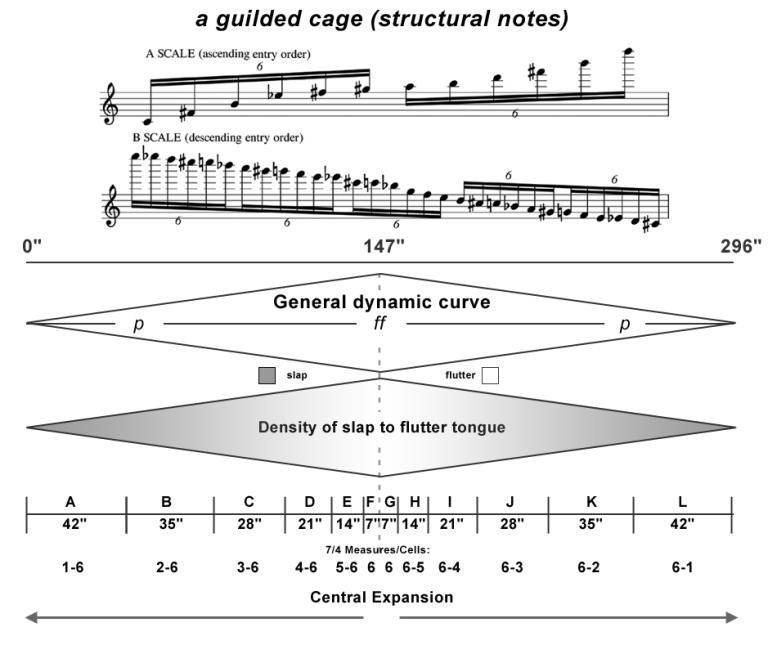Scored for solo flute
Duration: 5’00”
PDF Score here.
Mp3 (midi) realisation:

The above scales are derived from the flute range: C4 <-> F7, centered around G#5/A5; (C4 <-> G#5 | A5 <-> F7)
A SCALE:
C4 (+6) F#4 (+5) B4 (+4) Eb5 (+3) F#5 (+2) G#5 | A5 (+2) B5 (+3) D6 (+4) F#6 (+5) B6 (+6) F7
B SCALE: Outagraphic (OG) PC’s within range
C#4, D4, Eb4, E4, F4 | G4, G#4, A4, Bb4 | C5, C#5, D5, | E5, F5 | G5 |
Bb5 | C6, C#6 | Eb6, E6, F6 | G6, G#6, A6, Bb6 | C7, C#7, D7, Eb7, E7
Structural notes
PC’s from the A scale are introduced in ascending order, with those from the B scale in descending order, e.g., B4 could be followed by any PC other than C4 & F#4, and similarly, D7 could be followed by any PC other than Eb7 & E7.
- Are these directional constraints audible, meaningful?
- To what extent is “direction” a relative illusion (although music is written, performed, and generally perceived to be traveling in an up/down trajectory, it is perhaps a lack of location in reality that helps tie music to concepts of the infinite)?
“The experience of musical rhythm is a remarkable psychophysical phenomenon, in part because the perception of periodicities, namely pulse and meter, arise from stimuli that are not periodic… perception of pulse and meter result from rhythmic bursts of high-frequency neural activity in response to musical rhythms“ (Large and Snyder, 2009). *
- If our perception of clock time arises from “bursts” of alternative rhythmic energy, are we desperately trying to (a) tame time, or (b) do we have an intrinsic ability to relate to far more complex (actual) time, or both?
- If time is granular and mereological, meronomic (gunky) rather than discreet, could a rapid underlying pulse (in this instance 60 x 16 = 960 bpm), once introduced, permeate & inform proceedings?
All we really know about time is that we’re somehow in it. Maybe we’re creating it!
* Large, E. W. and Snyder, J. S. (2009), Pulse and Meter as Neural Resonance. Annals of the New York Academy of Sciences, 1169: 46–57. doi:10.1111/j.1749-6632.2009.04550.x